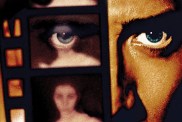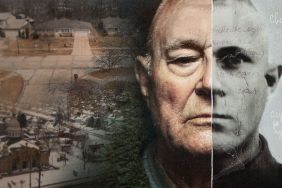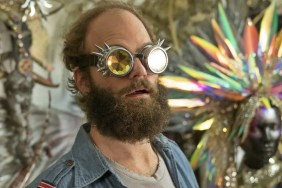Now available on DVD

Cast:
Blanche Baker as Ruth Chandler
Daniel Manche as David Moran
Blythe Auffarth as Meg Loughlin
Graham Patrick Martin as Willie Chandler, Jr.
Benjamin Ross Kaplan as Donny Chandler
Austin Williams as Ralphie âWooferâ Chandler
Directed by Gregory M. Wilson
Review:
If there were a club for horror novels least likely to become movies, Jack Ketchumâs “The Girl Next Door,” based loosely on events so awful it’s hard to believe they really occurred, would be its president emeritus. Infamous even in the more lenient world of print, this subversive tale of suburban horror reads as though its author intended it forever unfilmable. Producers nevertheless saw potential in Ketchum’s disturbing pages, and the resulting adaptation loses none of the edgy elements one might expect in its translation to the screen. Everything is here — child abuse, incest, teenage alcohol use, torture, mutilation â practically a checklist for how to upset the MPAA. But while this adaptation amazingly retains much of its provocative source material, its management of that material is not so faithful.
“The Girl Next Door” opens with the somber musings of actor William Atherton (the smarmy, bureaucratic antagonist from “Ghostbusters”) as David Moran, a big-city businessman saddled with an oppressive guilt. His voice-over asserts that few of us know what true pain is, but hints that we are about to find out, leading us back to the summer of 1958 when he was a young boy.
David’s summer days are spent skipping stones across a nearby stream, eating ice cream at the local carnival, and hanging out next door with his friends and their middle-aged mother, Ruth. Recently divorced, Ruth is such a close confidant that the neighborhood kids call her “Aunt,” and enjoy certain freedoms under her watch that are off-limits at home. As long as the boys are willing to listen to a few alcohol-fueled sermons every now and then, anything goes in Aunt Ruth’s house. It’s an idyllic setup for a young boy, one that’s poised to get even better when David meets Meg, the pretty orphan who, following the death of her parents, has just moved into Aunt Ruth’s house.
But there’s something sinister under the summer sun. We sense it in the sultry heat that chokes the afternoons, in the subtle threat of Aunt Ruth’s dominance, and perhaps most alarmingly in the “game” David and his friends have concocted to kill time, a mix of tag and truth-or-dare that sits on the cusp of something terrible, just as the neighborhood boys teeter on the brink of puberty. It’s not long before Meg becomes the target of the game and â even worse â the madness and twisted morality of Aunt Ruth. As the heat rises, so does the savagery perpetrated on this young girl inside a suburban basement, all while troubled David watches and struggles between his loyalty to his friends and his own bourgeoning ethics.
Scripted by Daniel (“Halloween: The Curse of Michael Myers”) Farrands and horror novelist/short story writer Philip Nutman, with approval by author Ketchum, “The Girl Next Door” works hard to remain faithful to its inspiration â and, for the most part, succeeds. The film is steeped in the details of the novel; they’re just the wrong ones. The horrors that befall Meg are intact, but the heart within Ketchum’s book is missing in this adaptation.
Farrands and Nutman struggle from the start, attempting to establish the narrative framework and emotional scope of the novel with bookends starring Atherton as the adult David, sequences that feel clunky and superfluous. We are quickly introduced to David’s boyhood friends, but don’t have the chance to know them or sense the level of trust or devotion his character allegedly invests in them. The same is true for David’s relationship with Ruth; her “just one of the guys” status is not sufficiently established, her charisma stilted. David’s impulses and feelings are virtually unreadable throughout the bulk of them film, his actions lacking any evident drive, making it difficult to sympathize or support him as the horror unfolds.
The problems of the script are compounded by an assortment of misguided performances, including Blanche Baker’s overly dry take on Ruth. Rather than cold and calculating, she comes across bored and complacent. Opposite Baker, Blythe Auffarth tries too hard to pass for 13-year-old Meg, creating awkwardness instead of tenderness and charm in the sequences she shares with Daniel Manche as David. Manche also fails to create authenticity in his portrayal. His exchanges with the other boys feel weak and forced, and the lack of substance to their on-screen friendship dilutes any sense of loyalty he is supposed to share with them. Weakened, also, is the conclusion, which strives to wrench hearts but registers much less affecting. The “lesson” David learns is little more than a throwaway line, its significance seemingly an afterthought made in an attempt to validate what the producers have done in visualizing such a despicable story.
Still, it is in its visuals that “The Girl Next Door” actually excels. The film is skillfully and beautifully shot. There’s a palpable thickness in the air in the summer exteriors, the potent steam of adolescence accented by sunny hues, making the shift in action to the later basement scenes even more stark. Director Gregory M. Wilson and cinematographer William M. Miller also make deliberate choices in their treatment of the torture sequences, keeping most of the abusive contact offscreen. When one of the boys kicks Meg in the stomach, we hear the sickening blow but do not see it, Wilson’s camera fixed instead on David’s prying eye, implicating us in his voyeurism.
That implication — that we as observers are not necessarily so far removed David, and therefore his guilt â is the real horror of “The Girl Next Door,” but the film that this dark tale has borne never does that concept justice. Though it handles its depictions of human cruelty more tastefully than any of the “Saw” or “Hostel” movies, in the end it fails to offer a more satisfying treatise on the subject than either franchise. It is every bit as difficult to watch as intended, but nowhere near as challenging or powerful.










